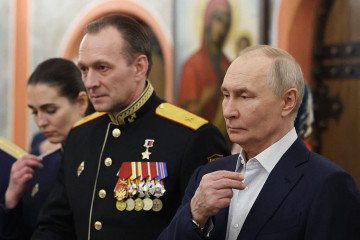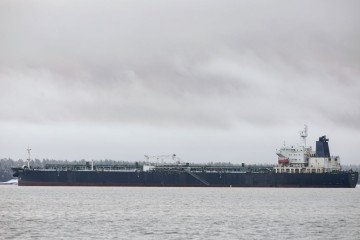- Category
- Latest news
Russia Would Need 91 Years and 50 Million Troops to Secure Proposed Buffer Zone in Ukraine, ISW Says
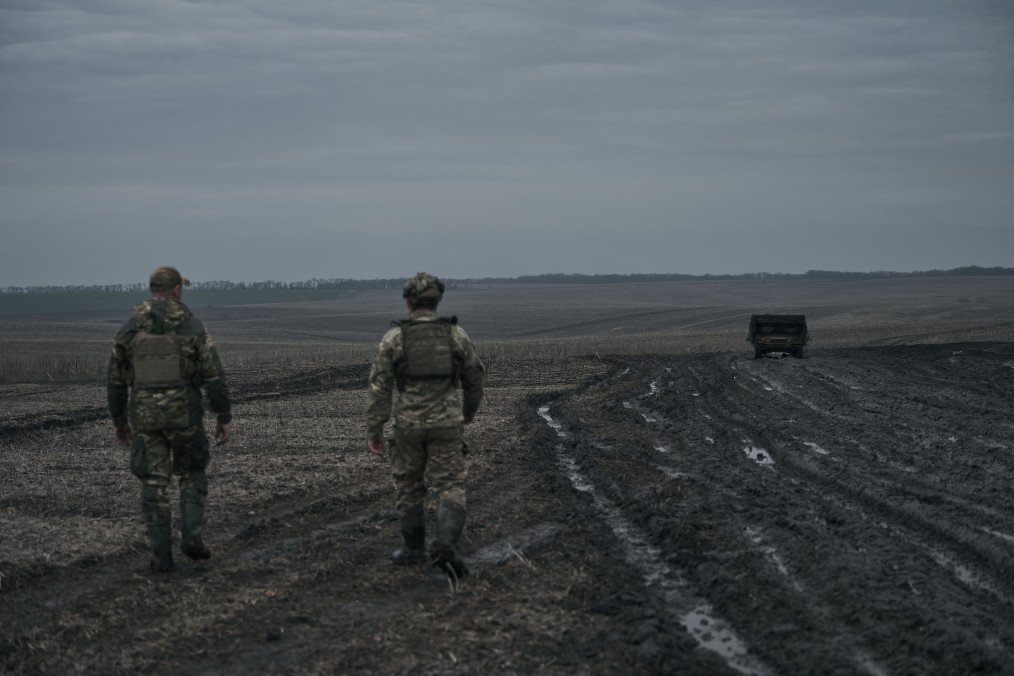
The Institute for the Study of War (ISW) estimates that at the current rate of territorial advances and personnel losses, the Russian military would require approximately 91 years to secure the area proposed as a “buffer zone” by Russian Security Council Deputy Chairman Dmitry Medvedev and Russian leader Vladimir Putin.
This projection comes amid ongoing discussions in Moscow about expanding territorial control in Ukraine.
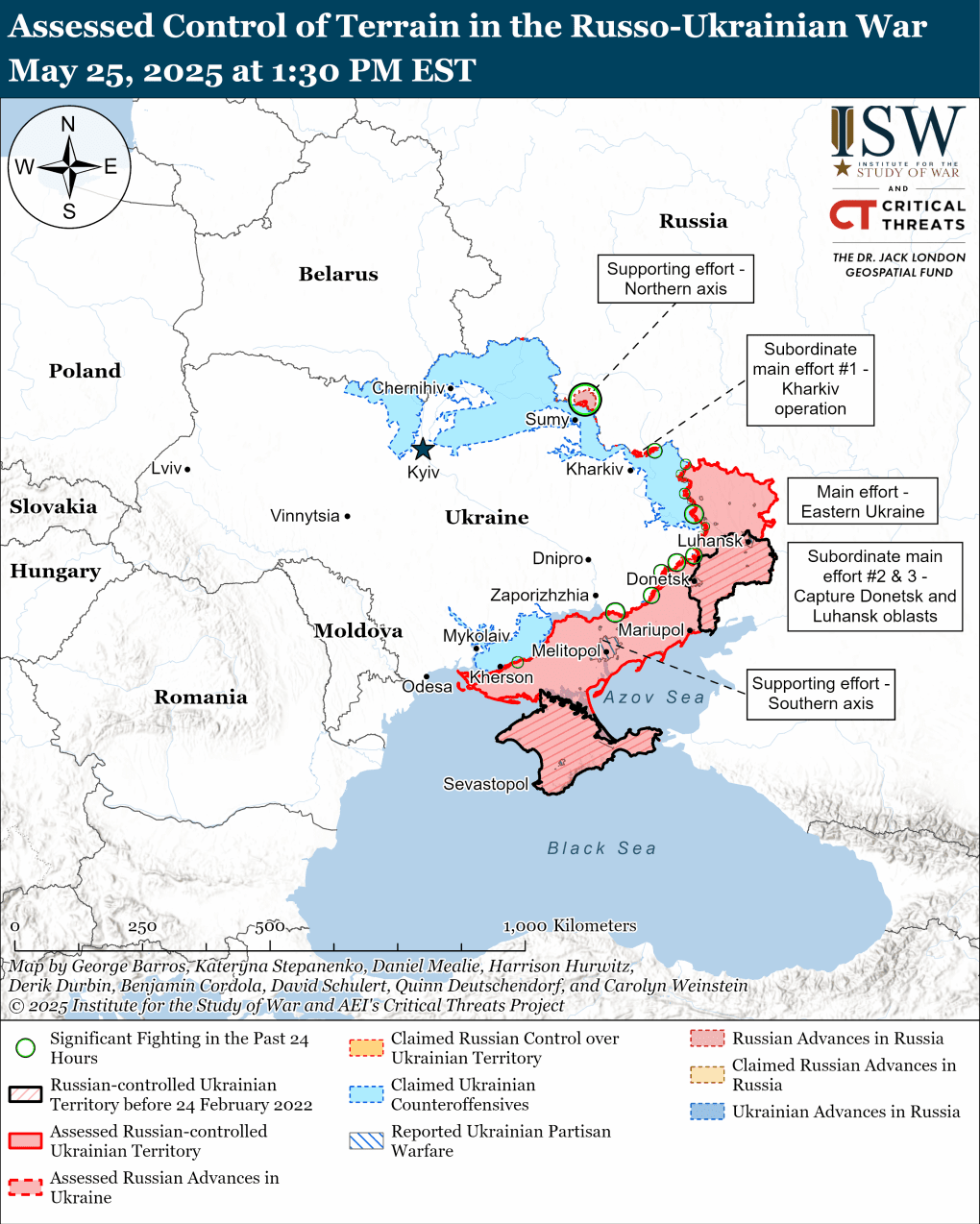
According to ISW, Russian forces are currently advancing an average of 14.3 square kilometers per day, while incurring around 1,500 casualties daily. Completing the capture of the remaining parts of Donetsk, Luhansk, Zaporizhzhia, and Kherson oblasts—territories claimed by Russia in 2022—could take nearly four more years.
Extending control over a much larger area, as Medvedev has suggested, would require decades of continued military operations and significant human and material costs.
Concurrently, Russian leadership is reportedly pursuing a multifaceted strategy aimed at weakening Ukrainian resolve and Western support. This includes sustained long-range missile and drone strikes, intense information campaigns, and public messaging designed to create a perception of inevitable Russian success.
Notably, on the night of May 24–25, Russian forces launched the largest combined drone and missile attack of the war to date. According to the Ukrainian Air Force, Russia deployed hundreds of drones and missiles targeting multiple regions, including Kyiv and Chernihiv. Ukraine reported intercepting many of the projectiles, though at least 12 civilians were killed and dozens injured.
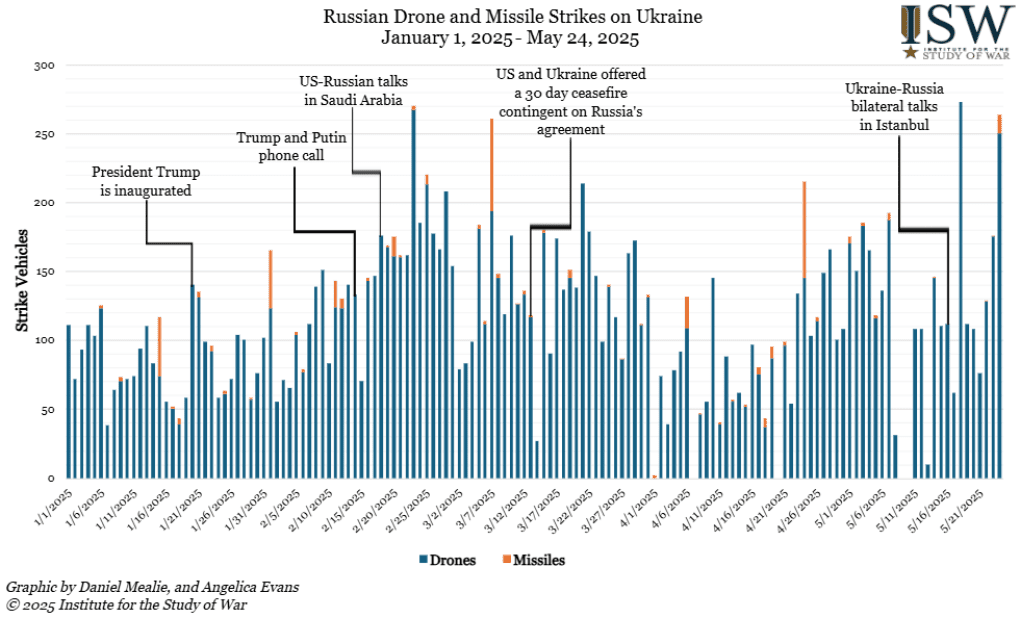
Analysts note a renewed use of mobile missile systems in occupied Crimea, making them difficult to track and intercept. While cruise missile usage has reportedly declined in recent months—likely due to cost considerations—Russia appears to be stockpiling munitions for periodic large-scale strikes.
Despite these efforts, ISW emphasizes that Russia’s core strategic demands have not fundamentally changed over the past three years. Meanwhile, persistent losses and dependence on undertrained personnel have significantly undermined Russia’s operational capacity on the ground.
On May 26, Ukrainian President Volodymyr Zelenskyy stated there is currently no indication that Russian leader Vladimir Putin and his inner circle are seriously pursuing a peaceful resolution to Russia’s war against Ukraine.


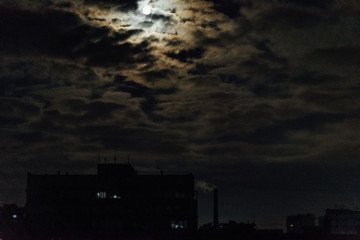
-72b63a4e0c8c475ad81fe3eed3f63729.jpeg)
